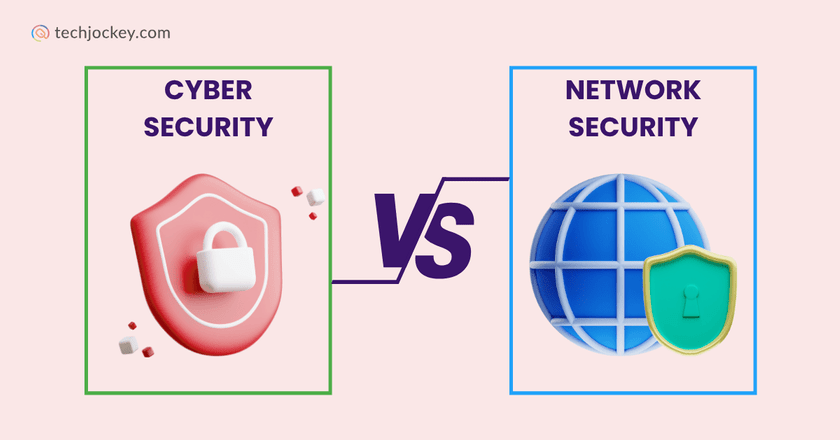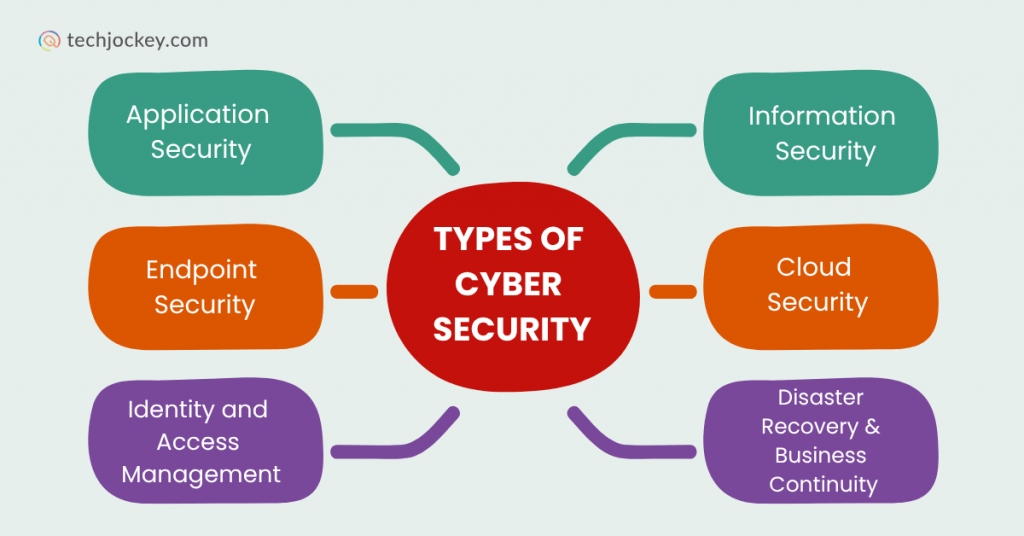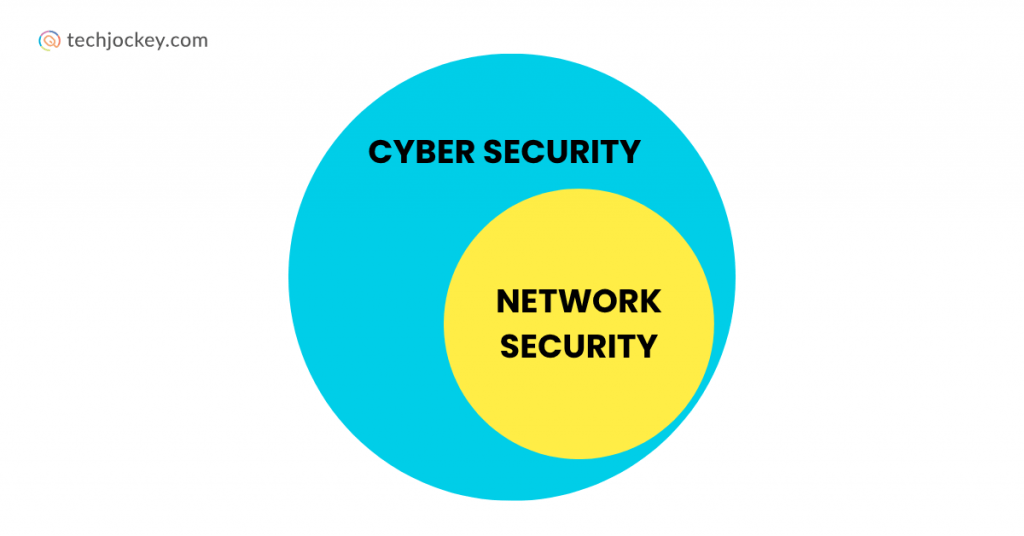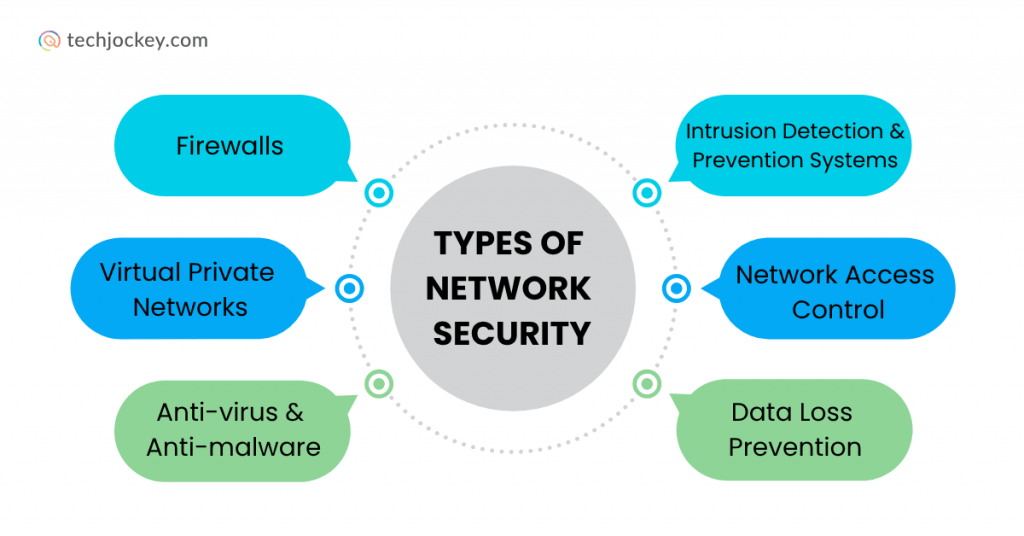What Is The Difference Between Cybersecurity and Network Security?

Most people love to get easy money; we can add cyber attackers to the group. They are not just harmful to individuals but can also attack organizations.
Businesses are moving toward everything online in this digital world, but they can’t expect that their data will always be safe. That’s why every business needs strong protection against cyber threats.
There are two critical terms in protecting data: ‘Cybersecurity’ and ‘Network Security’. Although they sound similar, they differ a lot from each other. Let’s move toward explaining cybersecurity and network security.
What is Cyber Security?
The term cybersecurity means securing your endpoints from cyber threats. Businesses, nowadays, are present everywhere online. They work on cloud platforms, deal with customer data, and have many employee devices.
Therefore, it becomes essential for
Different Types of Cyber Security

Cybersecurity has several specialized areas to effectively protect your business. Below are discussed its types:
- Application Security: It mainly focuses on protecting business applications. It works in three steps:
- Secure coding
- Testing applications
- Regular updates to fix soft spots
- Information Security: The information security protects your valuable data as it is processed or stored. It blocks the possibility of data leakage or even unauthorized changes.
- Endpoint Security: It protects various devices or endpoints, e.g., laptops, desktops, phones, etc. In case of any occurrence of a threat, it does not propagate to broader systems.
- Cloud Security: It helps protect everything that’s present on the cloud platforms, including Azure, Google Cloud, AWS, and more.
- Identity and Access Management: It manages access to your systems and data. It makes sure that only the authorized people can use it.
- Disaster Recovery & Business Continuity: It assists your business in overcoming any cyberattacks or data breaches that have already happened.

What is Network Security?
Network security is a subset of cybersecurity that protects the network connections of your computers. It helps in keeping unauthorized users or any harmful traffic away from your business network
Network security can include firewalls to block malicious traffic or other network monitoring tools to check for any suspicious activities.

Cybersecurity involves taking care of the security of your entire digital environment. On the other hand, network security keeps your network connections safe. Both of them work for one similar task, i.e., to provide your business with high-end security in the online world.
Types of Network Security

As same as cybersecurity, network security also has different types for different levels of security. Below are they:
- Firewalls: Firewalls form a shield between your trusted internal network and outside traffic. These won’t let any unwanted traffic come inside your business network.
- Intrusion Detection and Prevention Systems: They keep a check on the network traffic in real time. They instantly take action and stop any suspicious activity detected.
- Virtual Private Networks (VPNs): These are private networks for employees. They keep all the data sent over public networks safe and private using encryption.
- Network Access Control: Only authorized devices can obtain access to your network. It aids in keeping out unauthorized devices that may introduce threats.
- Anti-virus & Anti-malware: They scan both network endpoints and traffic to inspect any malicious software. They assist in identifying, blocking, and removing malware before it propagates.
- Data Loss Prevention: It tracks the flow of data to ensure sensitive data does not get out of your network
Network Security vs Cybersecurity Comparison
Both cybersecurity and network security work in order to guard your business. So, below is a more detailed difference:
Scope
- Cybersecurity encompasses the whole digital landscape. These are data, software applications, user accounts, devices, cloud systems, and even operational processes.
- Network security only concentrates on the network layer – routers, switches, servers, and data passed through your network
Protective Level
- Cybersecurity works at a wider spectrum, and it deals with threats regardless of where they happen, whether in your apps, devices, user credentials, or cloud platforms.
- Network security is more focused and can only handle the threats that attack or enter through your network as the entry point.
Threat types addressed
- Cybersecurity addresses the threats of malware, phishing, social engineering, insider threats, data breaches, and cloud vulnerabilities.
- Network security targets attacks such as malicious access, man-in-the-middle attacks, DDoS attacks, and malware attempting to traverse networks.
Primary tools and strategies
- Cybersecurity depends on various strategies like encryption, access control, identity management, secure code, endpoint protection, and disaster recovery planning.
- The network security uses network segmentation, firewalls, IDS/IPS, VPN, and real-time monitoring.
Responsibility focus
- Cybersecurity sometimes requires policies, staff consciousness, and procedures to safeguard the entire digital ecosystem.
- Network security tends to be more technical and involves network administrators and other teams of the IT department working on infrastructure and devices.
Position in layered defense
- Cybersecurity is similar to the general security policy and online protective shield that guards wherever data flows.
- Network security is a security layer. It determines who and what can pass on (enter) and move within your network.
Common Overlaps and Integration
- Although cybersecurity and network security involve different areas of focus, when combined, they make a stronger front line.
For example:
- A firewall security management software (network security) prevents traffic that carries a malicious activity; however, endpoint protection software (cybersecurity) on a device blocks malware that could roll in on the firewall.
- Network Access Control allows a limited number of people to connect to a network. On the other side, identity and access management allow users to see only permitted content.
- Unified Threat Management is a combination of many tools into a single package. This includes firewalls, antivirus, and other areas of protection.
Conclusion
Cybersecurity and network security work closely together. However, they are not one and the same.
Cybersecurity looks after your whole digital space: everything from information to users, devices to applications, and cloud services. Network security pays direct attention to protecting paths and the infrastructure connecting them.
Both are equally important to a business. When they work collectively, they help reduce the risks that come from hackers, insider threats, and other cyber attacks.
Mehlika Bathla is a passionate content writer who turns complex tech ideas into simple words. For over 4 years in the tech industry, she has crafted helpful content like technical documentation, user guides, UX content, website content, social media copies, and SEO-driven blogs. She is highly skilled in... Read more








